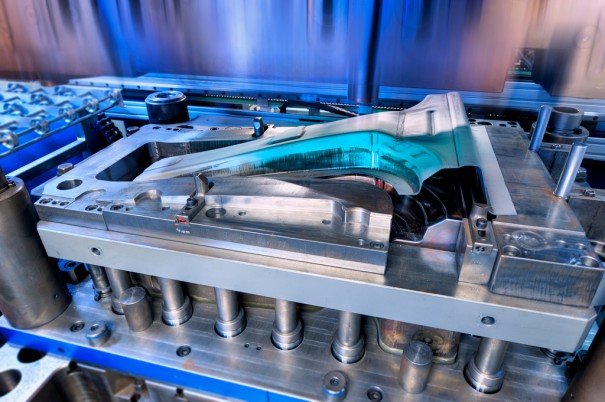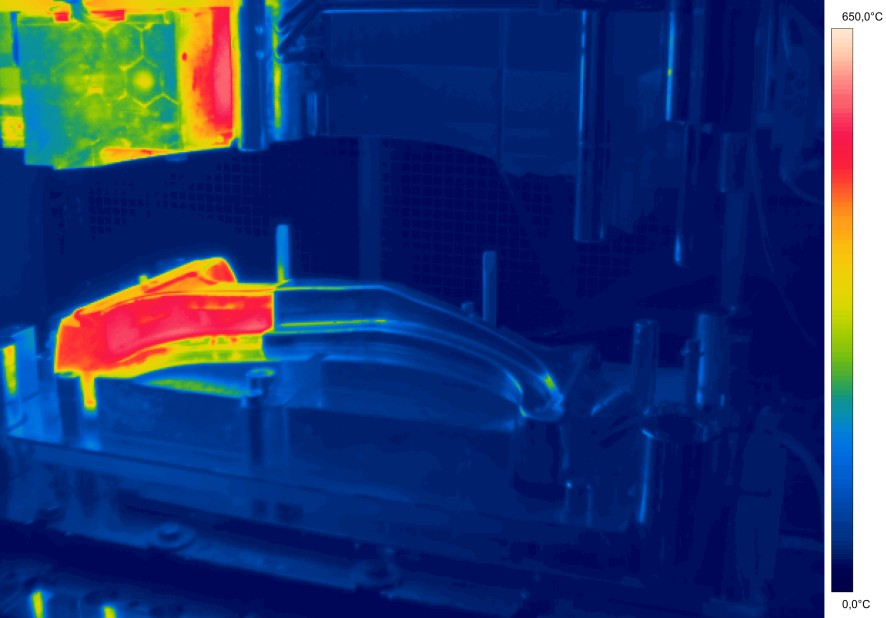Tailored Tempering process for hot forming (partial press hardening)
It is not always easy to combine safety and lightweight construction when manufacturing automobiles. Crash-relevant components should protect drivers and passengers against injury. In order to do so, they must be able to “ward off” the impact energy, while reducing it at the same time. Therefore, they need to be not only very strong, but must also yield to some extent.
The automotive industry solves the strength problem with hot forming. Here, blanks of hot forming steel are formed in special dies at a temperature of 800 degrees Celsius and then cooled rapidly. The strength values are currently around 25 percent higher than the strongest materials for cold forming. This means that it is possible to construct components with thinner walls, so that the conflict of aims between safety and lightweight construction would be solved. However, a further requirement is that in defined areas of the component, crash energy should be reduced. Hot forming components which are hardened throughout do not possess enough extensibility for this.

Technology for lightweight auto construction
This is why we have developed the tailored tempering process. The innovation is patented for thyssenkrupp Steel Europe and makes it possible to manufacture hot forming components in the die with precisely defined zones of varying strength or ductility – in one working step and from a sheet metal plate of the hot forming steel. One example of this is the B-pillar: This component, which is attached in the middle of the vehicle between the roof and the floor, becomes so strong in its upper two-thirds section as result of the tailored tempering process that the passengers are protected in the case of an impact. The bottom third is ductile enough that it can reduce energy. The secret of the new technology is the different cooling rates in different areas of the forming tool.
Thermography of a tailored hot formed B-pillar

The right property in the right place – tailored properties for hot-formed components
Depending on the demands placed on the components, tailored production processes like Tailored Welded Blanks, partial press hardening – be it Tailored Tempering in the die or in the hot forming furnace, flexible rolling or the use of patched blanks – comprise technical solutions for which thyssenkrupp Steel offers a wide range of uncoated and AS-coated MBW® steels for hot forming. All these solutions show weight saving potential for crash-relevant structural car parts with additional local optimization of properties. A Tailored Welded Blank, can, for instance, also be a tailored overall solution for a hot-formed door ring.




